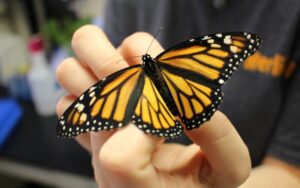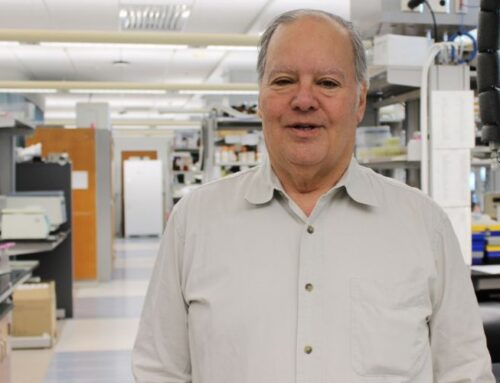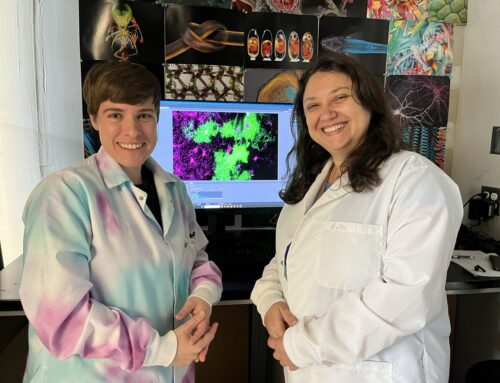Merlin Lab and The Butterfly Effect: How Monarch Clocks Keep Migration on Time
By: TAMU Biology
 Every autumn, millions of monarch butterflies embark on one of nature’s most awe-inspiring journeys, traveling thousands of miles from North America to central Mexico. What makes this feat possible? A tiny biological clock ticking inside their bodies. Dr. Christine Merlin, a circadian biologist in the Department of Biology at Texas A&M University, studies the molecular and genetic mechanisms that guide this epic migration.
Every autumn, millions of monarch butterflies embark on one of nature’s most awe-inspiring journeys, traveling thousands of miles from North America to central Mexico. What makes this feat possible? A tiny biological clock ticking inside their bodies. Dr. Christine Merlin, a circadian biologist in the Department of Biology at Texas A&M University, studies the molecular and genetic mechanisms that guide this epic migration.
One of Dr. Merlin’s lab focus is on how the monarch’s internal circadian clocks—notably located in their antennae—interact with environmental cues like light and day length to direct migration timing and orientation. Monarchs rely on a time-compensated sun compass to maintain a steady direction, adjusting for the sun’s movement across the sky. This internal timing mechanism is essential for getting them to their overwintering sites before the cold sets in.
By combining genetics, molecular biology, biochemistry, and behavioral analysis, her lab is uncovering the role of specific clock genes in governing not just daily rhythms, but also the seasonal switch that prompts butterflies to migrate. Recent breakthroughs in monarch genome editing—using tools like CRISPR/Cas9—have enabled her team to study clock genes in vivo, providing a detailed look at how these genes influence behavior.
Why It Matters
Understanding how monarchs time their migration has broader implications than just insect biology. Circadian clocks are a universal feature of life on Earth, and are conserved from butterflies to humans. By studying how these clocks influence long-distance movement, Dr. Merlin’s work offers insight into how organisms adapt to daily and seasonal changes, with potential relevance for global challenges like biodiversity conservation and human chronobiology.





